
Chapeltown is a suburb of north-east Leeds, in West Yorkshire, England. It is part of the Leeds City Council Ward of Chapel Allerton. It is approximately one mile north of Leeds city centre.
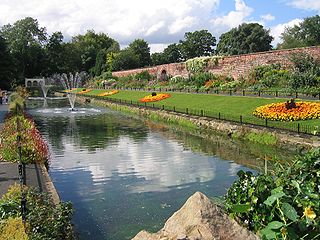
Roundhay is a large suburb in north-east Leeds, West Yorkshire, England. Roundhay had a population of 22,546 in 2011.
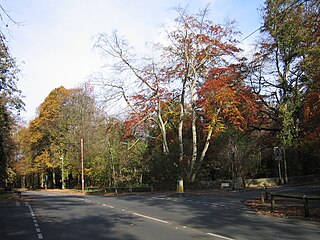
Gledhow is a suburb of north east Leeds, West Yorkshire, England, east of Chapel Allerton and west of Roundhay.
Cinven is a global private equity firm founded in 1977, with offices in nine international locations in Guernsey, London, New York, Paris, Frankfurt, Milan, Luxembourg, Madrid, and Hong Kong that acquires Europe and United States based corporations, and emerging market firms that fit with their core businesses, and necessitate a minimum equity investment of €100 million or more. In 2015, it had €10.6 billion in assets under management.

Leeds General Infirmary, also known as the LGI, is a large teaching hospital based in the centre of Leeds, West Yorkshire, England, and is part of the Leeds Teaching Hospitals NHS Trust. Its previous name The General Infirmary at Leeds is still sometimes used.
Hull and East Riding Hospital, formerly BUPA Hospital Hull and East Riding is located in Anlaby, East Riding of Yorkshire, England. It is owned by Spire Healthcare.

Potternewton is a suburb and parish between Chapeltown and Chapel Allerton in north-east Leeds, West Yorkshire, England. It is in the Chapel Allerton ward of Leeds City Council.
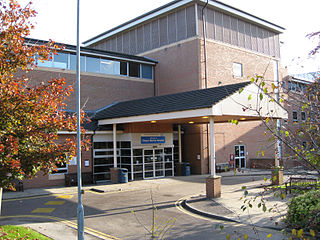
Chapel Allerton Hospital is located in the area of Chapel Allerton, Leeds, West Yorkshire, England and is operated by the Leeds Teaching Hospitals NHS Trust. The main entrance is on Chapeltown Road, with vehicle exits onto Harehills Lane and Newton Road.
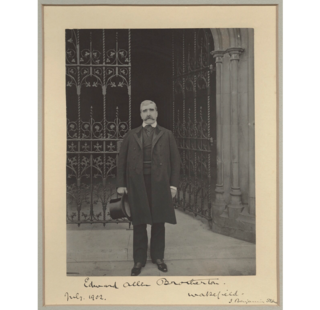
Edward Allen Brotherton, 1st Baron Brotherton, known as Sir Edward Brotherton, Bt, between 1918 and 1929, was an industrialist in Wakefield, West Yorkshire, England and a benefactor to the University of Leeds and other causes. He was also a Conservative Party politician, and sat in the House of Commons between 1902 and 1922.

George Corson (1829–1910) was a Scottish architect active in Leeds, West Yorkshire, England.

Leeds Teaching Hospitals NHS Trust is an NHS hospital trust in Leeds, West Yorkshire, England.

Leeds in West Yorkshire, England is a tourist destination.

Leeds Corporation Tramways formerly served the city of Leeds, England. The original trams were horse-drawn, but the city introduced Britain's first overhead-powered electric trams in 1891, and by 1901, electrification had been completed. The tramway opened on 29 October 1891.

Chapel Allerton is an inner suburb of north-east Leeds, West Yorkshire, England, 2 miles (3.2 km) from the city centre.
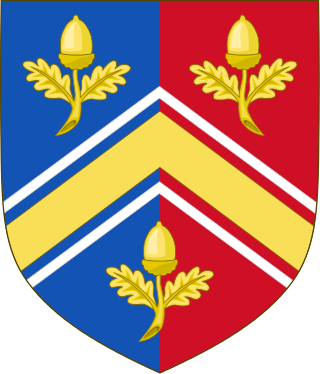
Members of the Middleton family have been related to the British royal family by marriage since the wedding of Catherine Middleton and Prince William in April 2011, when she became the Duchess of Cambridge. The couple has three children, George, Charlotte and Louis. Tracing their origins back to the Tudor era, the Middleton family of Yorkshire of the late 18th century were recorded as owning property of the Rectory Manor of Wakefield. The land passed down to solicitor William Middleton who established the family law firm in Leeds which spanned five generations. Some members of the firm inherited woollen mills after the First World War. By the turn of the 20th century, the Middleton family had married into the British nobility and, by the 1920s, the family were playing host to the British royal family.
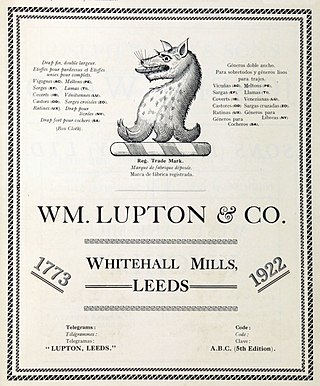
The Lupton family in Yorkshire achieved prominence in ecclesiastical and academic circles in England in the Tudor era through the fame of Roger Lupton, provost of Eton College and chaplain to Henry VII and Henry VIII. By the Georgian era, the family was established as merchants and ministers in Leeds. Described in the city's archives as "landed gentry, a political and business dynasty", they had become successful woollen cloth merchants and manufacturers who flourished during the Industrial Revolution and traded throughout northern Europe, the Americas and Australia.

Frances Elizabeth Lupton was an Englishwoman of the Victorian era who worked to open up educational opportunities for women. She married into the politically active Lupton family of Leeds, where she co-founded Leeds Girls' High School in 1876 and was the Leeds representative of the North of England Council for Promoting the Higher Education of Women.
Dorothy Una Ratcliffe, often known as D.U.R., was a socialite, heiress and author. She wrote in the Yorkshire dialect, despite being born in Sussex and brought up in Surrey. She published 49 books, edited a magazine called The Microcosm, travelled all over the world, and was a prolific collector of books, manuscripts and other documents.
Roundhay is a ward in the metropolitan borough of the City of Leeds, West Yorkshire, England. It contains 50 listed buildings that are recorded in the National Heritage List for England. Of these, one is listed at Grade II*, the middle of the three grades, and the others are at Grade II, the lowest grade. The ward is to the northeast of the centre of Leeds, and includes the suburbs of Roundhay, Gledhow, and Oakwood. The ward is mainly residential, and most of the listed buildings are houses, cottages and associated structures, farmhouses and farm buildings. The other listed buildings include an open-air bath, a bridge, schools, a hotel, churches and a gravestone in a churchyard, a folly, a row of almshouses, a hospital, a drinking fountain, a shop, and a clock tower.
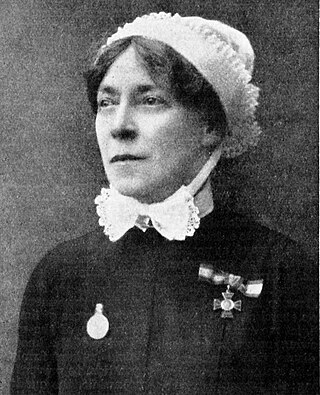
Euphemia Steele Innes RRC DN was a Scottish nurse who served for 21 years as matron at Leeds General Infirmary in Leeds, West Riding of Yorkshire, England. She was decorated with the Royal Red Cross 1st class in 1916 for services with the Territorial Force Nursing Service in the First World War.

















